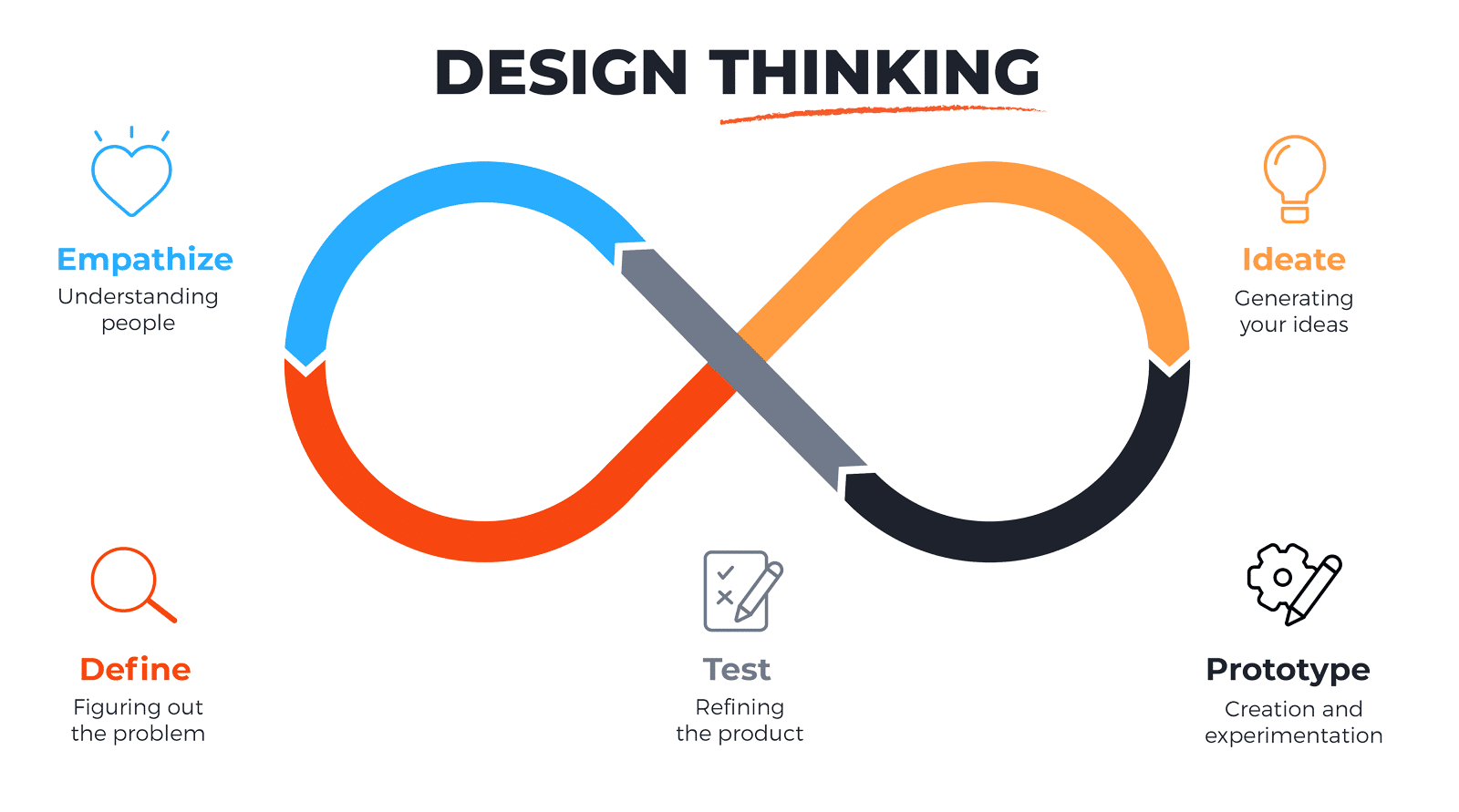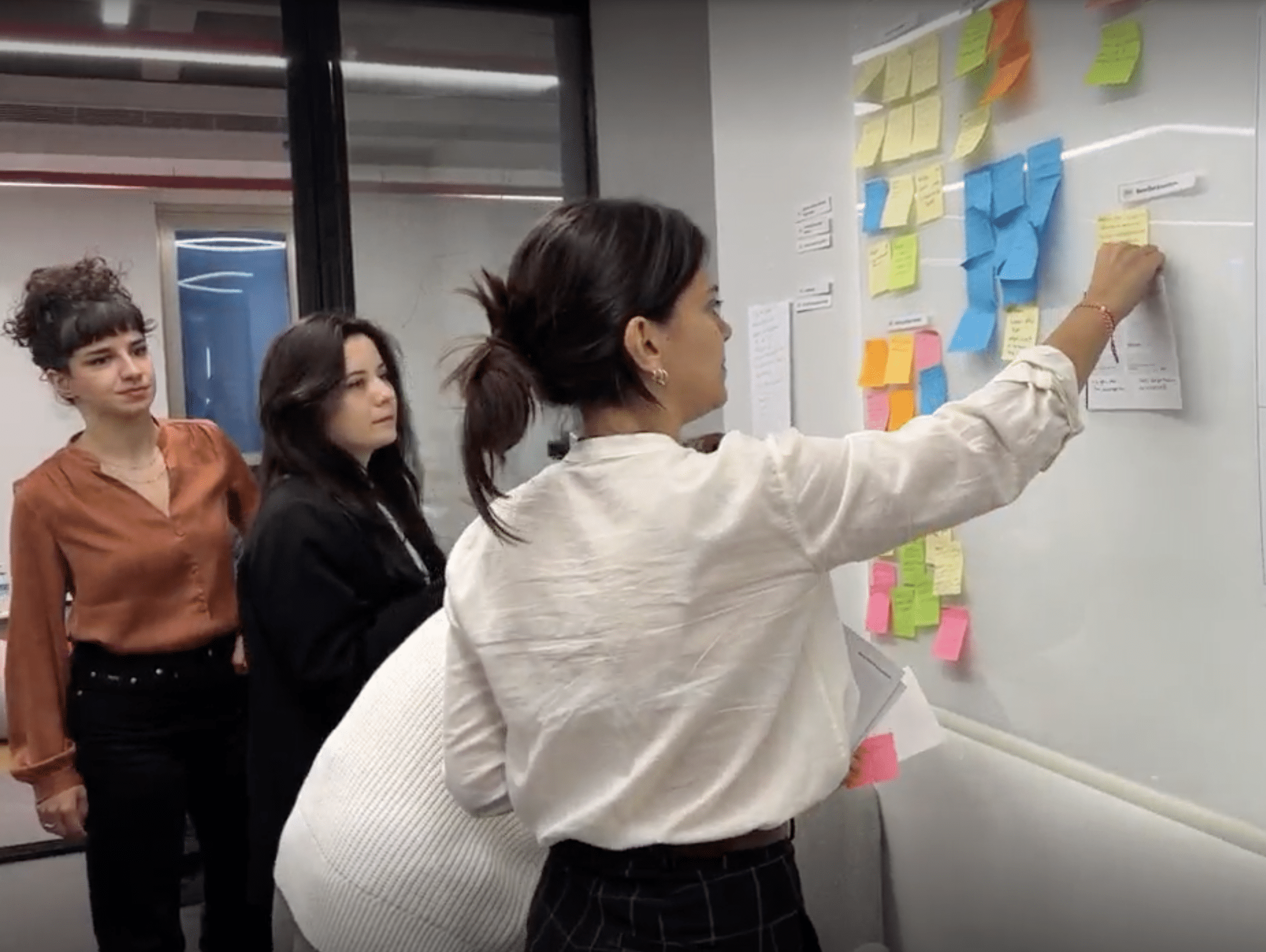Mastering Product Design: Key Principles and Best Practices
Mastering Product Design: Key Principles and Best Practices
When it comes to your product, nailing product design is the key to creating products that wow users, keep them happy, and make your competitors green with envy. We’re talking about everything from UX design to visual design, interaction design to collaboration among your rockstar team. So, grab your favorite design tool and let’s dive into the exciting world of product design, where we’ll uncover some juicy principles and best practices that will help you become a design ninja!
How Does Design Thinking Lead to Effective Product Design?

Design thinking is a problem-solving approach that focuses on understanding user needs and creating innovative solutions. It involves several stages, including empathizing with users, defining the problem, ideating, prototyping, and testing. By following a design thinking approach, product designers can gain valuable insights into user requirements, preferences, and pain points, leading to more effective product design. Some key principles of design thinking for product design include:
- Empathy: Understanding the needs, goals, and challenges of users is the foundation of effective product design. By putting yourself in the shoes of the users, you can gain insights into their behaviors, motivations, and expectations, which can inform your design decisions.
- Defining the problem: Clearly defining the problem or challenge you are trying to solve is crucial for effective product design. This involves identifying the pain points and opportunities for improvement, setting goals and objectives, and aligning them with user needs.
- Ideation: Generating a wide range of ideas and solutions without judgment is a critical part of the design thinking process. Brainstorming, sketching, and other creative techniques can help you come up with innovative ideas that address the defined problem.
- Prototyping and testing: Building prototypes and testing them with real users can provide valuable feedback and insights for refining the design. Rapid prototyping and iterative testing allow you to identify and fix any usability issues early in the design process.
How Can You Delight Users with User-Centered Design?
User-centered design (UCD) is an approach that focuses on designing products that are intuitive, efficient, and enjoyable to use for the target users. UCD means involving users in the design process through techniques such as usability testing, exploratory research, and iterative design. Here are some best practices for incorporating user-centered design in your product design process:
- Exploratory research: Conducting thorough user research to understand user behaviors, preferences, and needs is essential for designing products that meet user expectations. Techniques such as user interviews, surveys, and usability testing can provide valuable insights for informing design decisions.
- User personas: Creating user personas, which are fictional representations of your target users, can help you better understand their characteristics, behaviors, and motivations. User personas can serve as a reference point throughout the design process to ensure that the design aligns with the needs and preferences of the intended users.
- Usability testing: Testing your design with real users can help you identify any usability issues and validate design decisions. Usability testing can be done at different stages of the design process, from early prototypes to the final product, to ensure that the design is user-friendly and meets the needs of the users.
- Iterative design: Embracing an iterative design approach allows you to continuously refine and improve your design based on user feedback. Regularly incorporating user feedback and making iterative design changes can lead to a product that is better aligned with user needs and preferences.
How to Optimize the Design Process for Successful Product Development
Companies are shelling out big bucks on product design, and for good reason. Design is no longer just about looks, it’s a game-changer that can make or break a product in the market. Customers want products that are not only functional, but also visually appealing, easy to use, and innovative. To stay ahead of the competition, companies are realizing they need to invest in product design like never before. And it’s not just about aesthetics – technology advancements, sustainability considerations, and meeting changing consumer expectations are all driving companies to put their money where their design is. In fact, as you can see, companies are spending over $2 billion annually on design, making it a serious investment that can pay off in spades.

To optimize the design process for successful product development, companies can use prioritization methods like the MOSCOW method, focus on user-centered design, use rapid prototyping to identify design flaws early, conduct design reviews, and continually improve the design process. These approaches can ensure that design efforts are focused on critical features, create user-friendly products, save time and money, identify potential problems early, and create better products that meet customer needs and exceed their expectations.
Here are the sets of ways to really optimize that process and ensure your product is developed properly:
- Research: Conduct thorough research to understand user needs, preferences, and pain points. This includes user research, market research, and competitor analysis to gather valuable insights that inform the design process.
- Ideation: Brainstorm and generate multiple ideas for solving the identified problem. Encourage creativity and collaboration among team members to come up with innovative solutions.
- Concept Development: Select the most promising ideas and develop them into detailed concepts. This involves sketching, wireframing, and creating prototypes to visualize the design.
- Evaluation: Evaluate the concepts against the defined goals, user needs, and technical feasibility. This helps narrow down the options and select the most viable design concept.
- Refinement: Refine the chosen design concept based on feedback from stakeholders, usability testing, and user feedback. Iterate on the design to improve its usability, functionality, and aesthetics.
- Implementation: Once the design is finalized, hand it off to the development team for implementation. Collaborate closely with the development team to ensure the design is implemented accurately and efficiently.
What Does Collaborative Design Mean and How Does it Help?
Collaboration is a critical element of effective product design. It involves bringing together cross-functional teams, including designers, developers, product managers, and stakeholders, to work together towards a common goal. Here are some best practices for fostering collaboration in product design:
- Cross-functional collaboration: Encourage collaboration among team members from different disciplines to leverage their diverse expertise and perspectives. Foster open communication, teamwork, and a shared understanding of project goals.
- Design reviews and feedback: Conduct regular design reviews and gather feedback from stakeholders and team members. This helps identify potential issues early and ensures that the design aligns with the project goals and user needs.
- Design tools and technology: Utilize collaborative design tools and technologies that enable team members to work together seamlessly. This includes design prototyping tools, version control systems, and project management platforms.
- Design sprints and workshops: Organize design sprints or workshops where team members can come together to ideate, prototype, and test design concepts collaboratively. This fosters creativity, innovation, and team bonding.

Key Takeaways
Product design is a multifaceted process that encompasses various aspects such as UX design, visual design, interaction design, and collaboration among team members. To ensure effective product design, principles such as design thinking and user-centered design are crucial, involving empathy, problem definition, ideation, prototyping, and testing. A well-defined design process, encompassing research, ideation, concept development, evaluation, refinement, and implementation, is essential for successful product development.
Collaboration among cross-functional teams plays a critical role in effective product design. Regular design reviews, feedback, collaborative design tools, and design sprints are vital in fostering collaboration and ensuring the best possible outcomes. By incorporating these principles and best practices into the product design process, products can be created that are user-centric, innovative, and successful in meeting user needs and driving business success.
Mastering product design requires a combination of UX design, visual design, interaction design, and collaboration among team members. Following design thinking and user-centered design principles, adopting a well-defined design process, and fostering collaboration among cross-functional teams are key to creating exceptional products that delight users and lead to business success.
Reading Time: 5 minutes
Don’t miss out the latestCommencis Thoughts and News.




